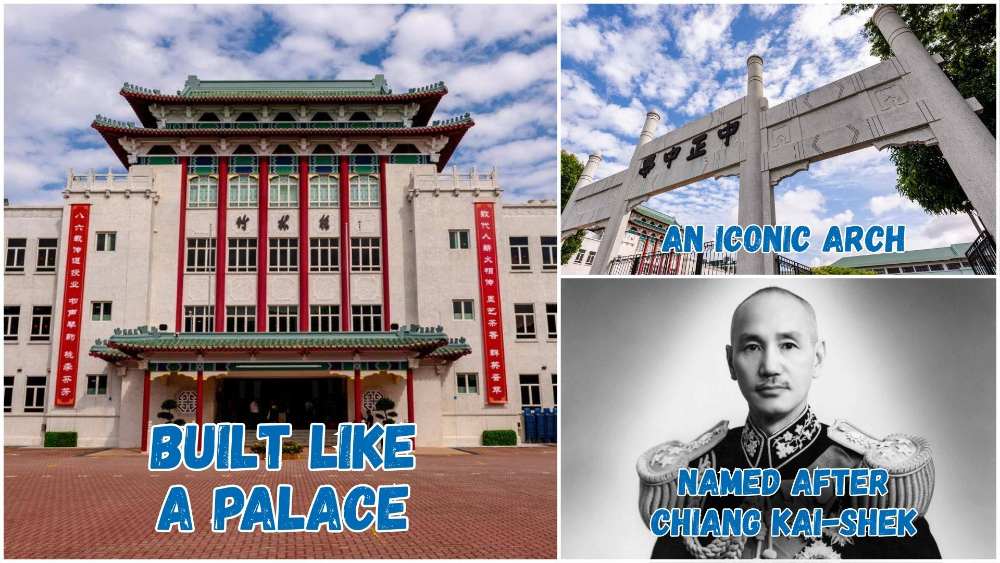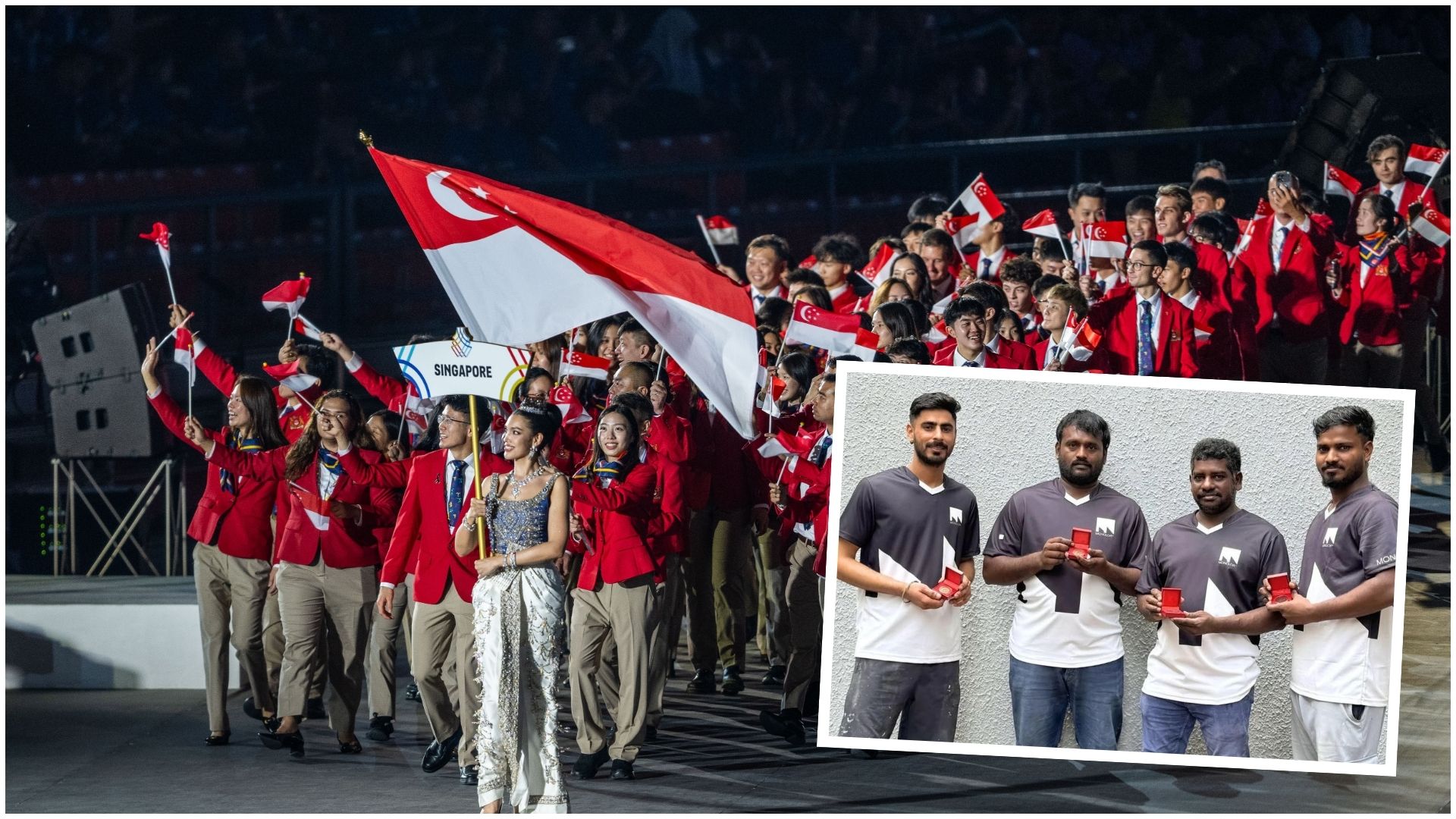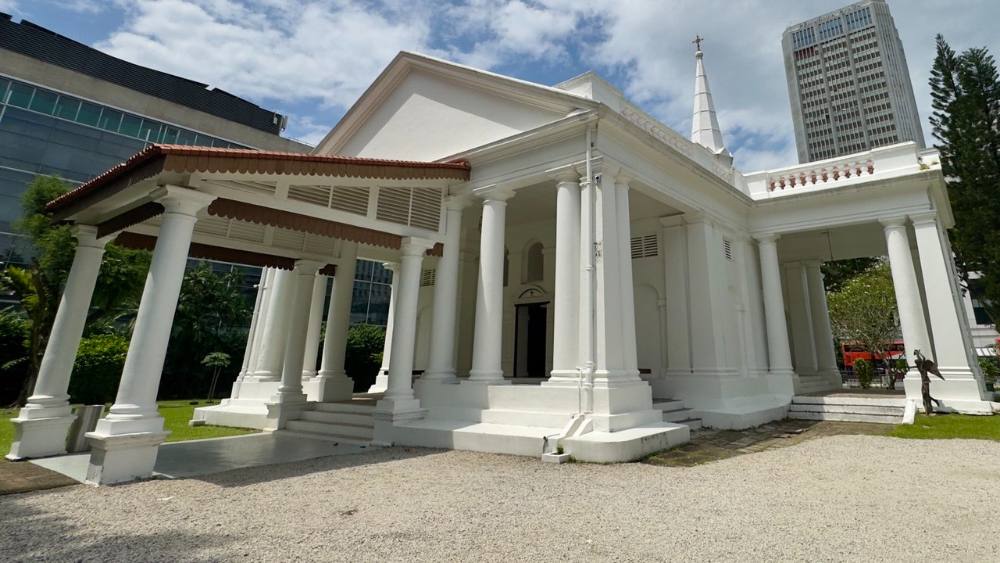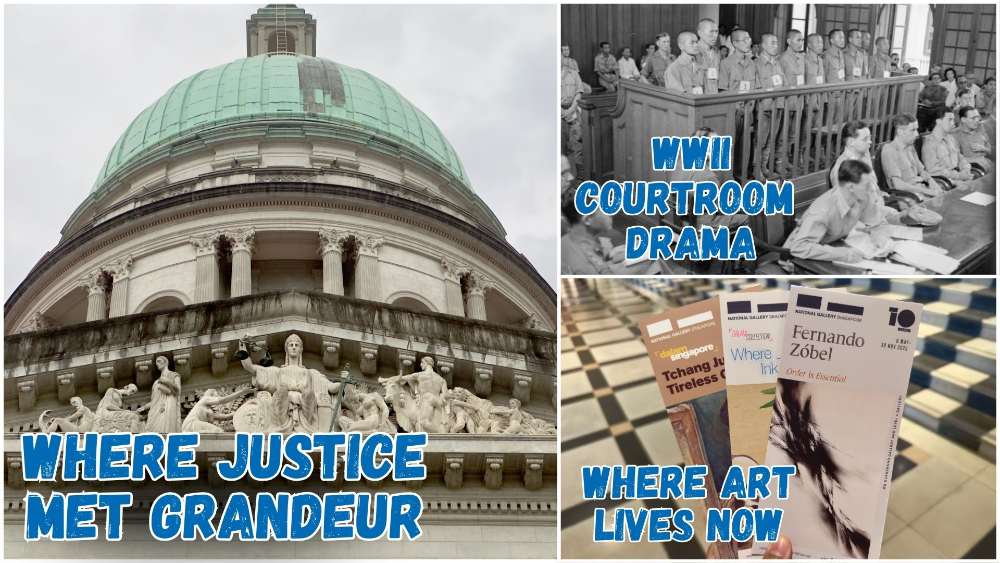Singapore’s First Public Building With Electricity? This Church On Hill Street
What is a National Monument? Who gazettes them? How many national monuments are there in Singapore? To date, the Preservation of Sites and Monuments, a division of National Heritage Board, has identified and gazetted 75 buildings, structures and sites of national significance as an integral part of Singapore’s built heritage.
And we're here to tell you all about them - one National Monument at a time!
You've probably passed by or stepped into more than a few of them without realising they were National Monuments: Al-Abrar Mosque, Asian Civilisations Museum, the Civilian War Memorial, Saint Andrew's Cathedral, the Esplanade Park Memorials, Fort Siloso on Sentosa - no need to plan an itinerary for friends visiting from overseas; just show them this article ✌️
In this edition, we focus our attention on the oldest Christian church on our Little Red Dot, the Armenian Church.
📍 Location
The Armenian Church of Saint Gregory the Illuminator, referred to locally as the Armenian Church, was the 2nd building to be gazetted as a National Monument. Located near other National Monuments such as the Old Hill Street Police Station and Central Fire Station, the MRT station nearest to the Armenian Church is City Hall.
📅 Significant dates
Date built: 1 Jan 1835 to Mar 1836
Milestones:
- 1 Jan 1835: The foundation stone was blessed by the Supreme Archimandrite, Reverend Thomas Gregorian
- 26 Mar 1836: The newly built church was consecrated by Reverend Johannes Catchick
- 1905: A new parsonage (where the priest resides) was built
- 1930s: The last Armenian parish priest left Singapore with the dwindling number of Armenians in Singapore
- May 2018: The Armenian Heritage Gallery was constructed, located in the parsonage
Date gazetted: 6 Jul 1973
📜 History
The Armenians were among the earliest merchants and traders to arrive in Singapore following its establishment as a British trading port in 1819. They were also one of the first Christian communities to erect a permanent, brick-and-mortar place of worship in Singapore.
When the first resident priest, Reverend Gregory ter Johannes, arrived in July 1827, a temporary chapel was set up for the Armenian community. Initially, they worshipped in a makeshift space behind John Little & Company at Commercial Square (now Raffles Place). By September that same year, services had moved to a small rented room at Merchant Square.
In 1827, the Armenian community began raising funds to build their own church. By 1833, they appealed for land, and in 1834, the British authorities granted them a site at the foot of Fort Canning Hill. Half of the construction costs were covered by local Armenians, with the rest contributed by Armenian communities in India and Java, along with support from European and Chinese merchants in Singapore.
The foundation stone was blessed on 1 Jan 1835 by Reverend Thomas Gregorian, the Supreme Archimandrite. At the time, only two other Christian chapels existed in Singapore—one by the London Missionary Society (1824) and another by the Roman Catholics (1833). The Armenian Church was consecrated on 26 Mar 1836 by Reverend Johannes Catchick.
During the Japanese Occupation (1942–45), looters stole several valuable items from the church, including an embossed Bible, ceremonial vestments, and 19th-century prayer books. The grounds were also used as air-raid shelters by the Japanese forces.
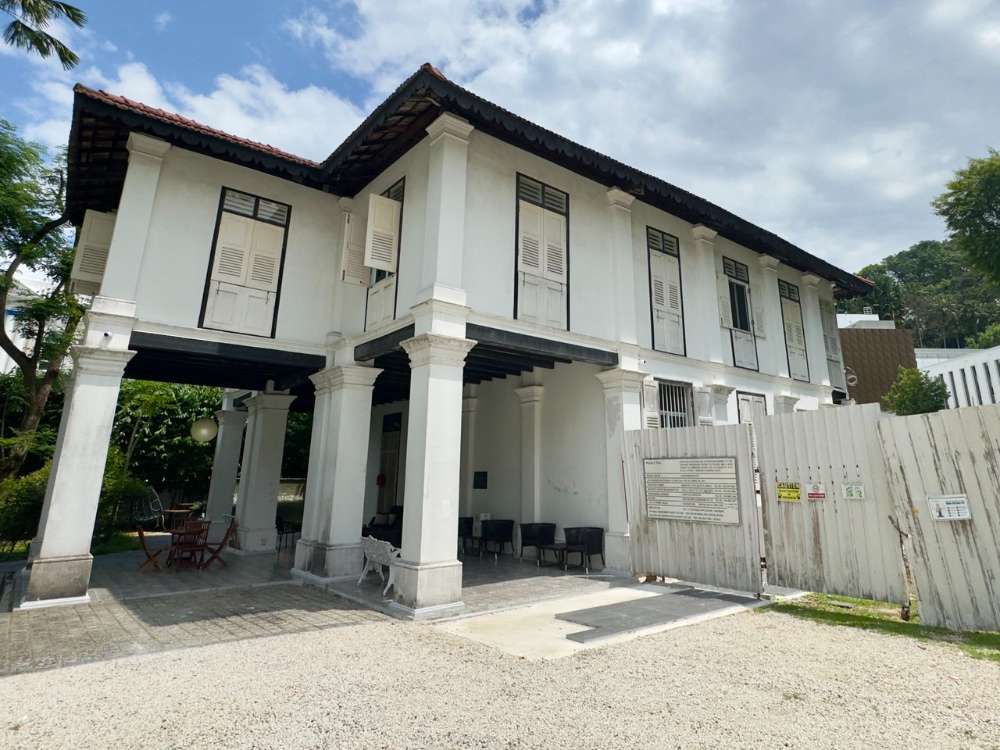 IMAGE: NG KAI
IMAGE: NG KAI
The original parsonage, once home to the church's resident priest, stood on the northeastern side of the garden. It was later demolished and replaced in 1905 by a new parsonage designed by Tomlinson & Lermit, funded by Nanajan Sarkies in memory of her husband, John Shanazar Sarkies.
The last resident priest left in the 1930s, and no successor was appointed due to the declining Armenian population in Singapore. Today, the former parsonage houses the Armenian Heritage Gallery, which is currently undergoing renovation.
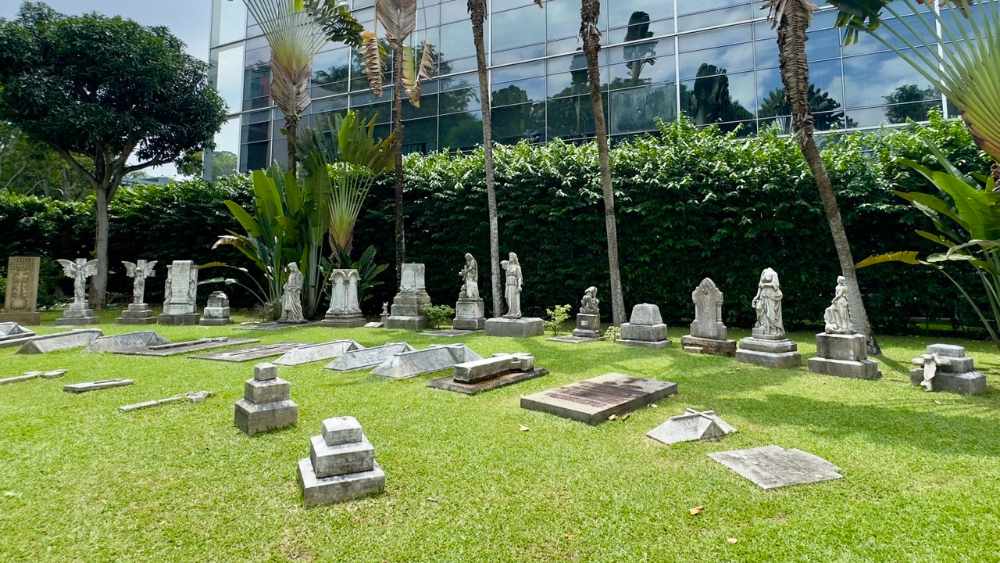 IMAGE: NG KAI
IMAGE: NG KAI
The church’s Memorial Garden holds the tombstones, but not the actual graves, of well-known Armenians:
- Agnes Joaquim, who bred the orchid hybrid Vanda Miss Joaquim, chosen to be Singapore’s national flower in 1981
- Catchick Moses, co-founder of the The Straits Times newspaper
- The Sarkies brothers, who founded a chain of luxury hotels, including Raffles Hotel
Today, Armenian services are held only during significant events or when an Armenian priest is visiting – for example, in 1986, the 150th anniversary of the church. However, the church building is popular with other Christian groups who use it for quiet worship.
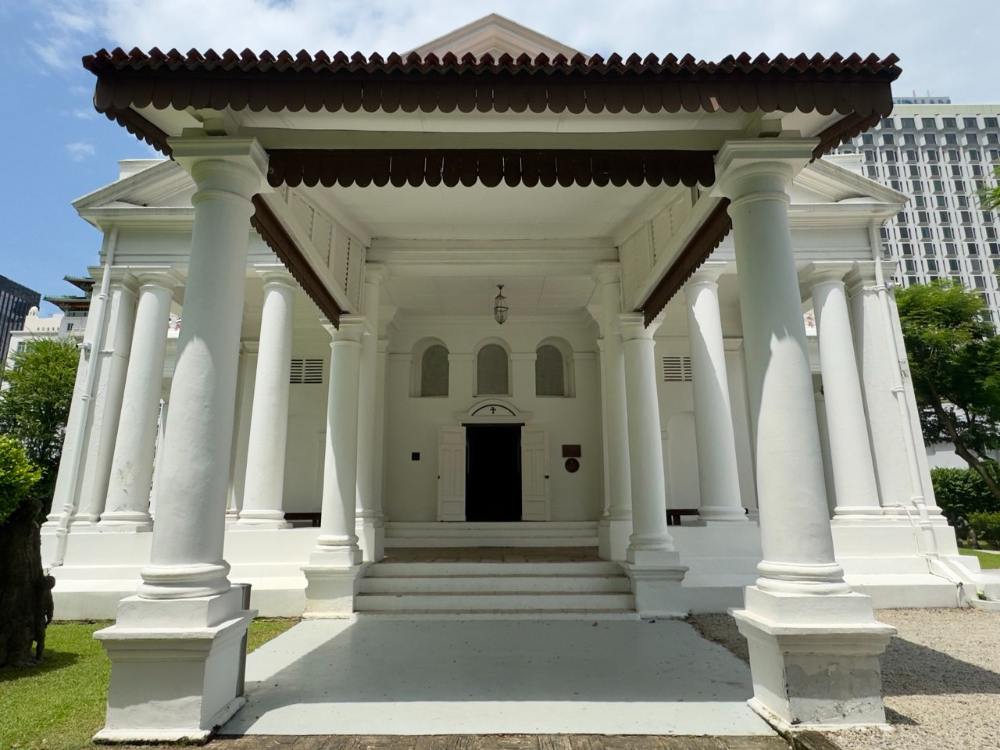 IMAGE: NG KAI
IMAGE: NG KAI
📐 Design and architecture
The Armenian Church was designed by George D. Coleman, an Irish architect who was the first Government Superintendent of Public Works and town planner of early colonial Singapore. He was also responsible for the designs of other National Monuments such as the Old Parliament House, the first Saint Andrew's Church, and Telok Ayer Market.
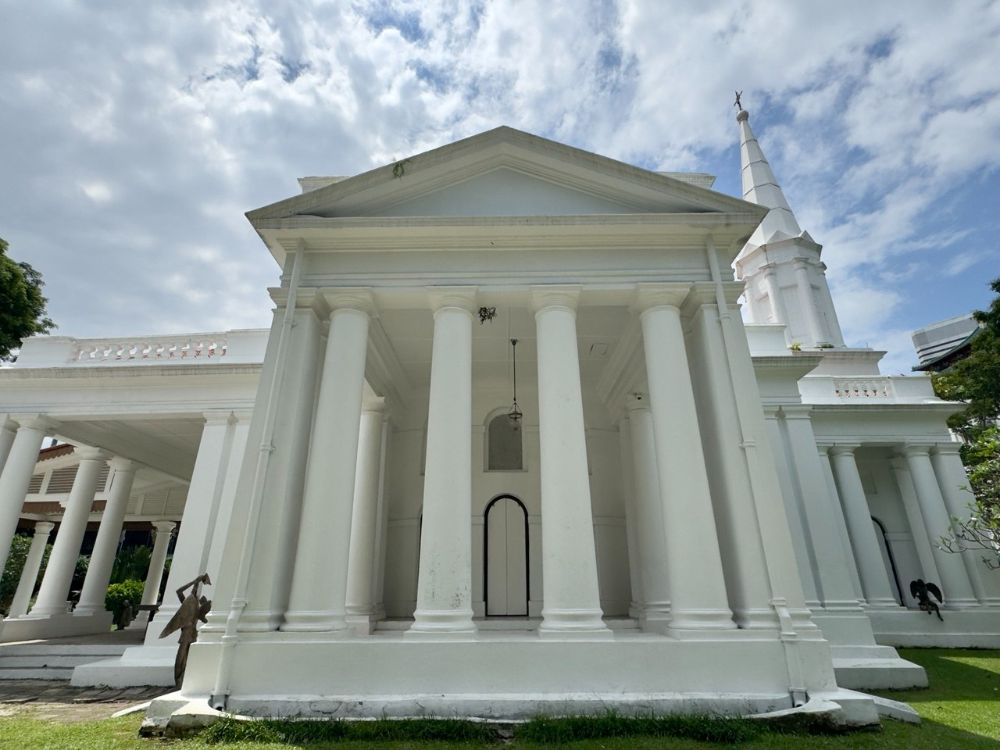 IMAGE: NG KAI
IMAGE: NG KAI
Designed in the shape of a cross, the Armenian Church features large Doric columns and a triangular pediment (upper part of the front of a building) at the end of each of its four arms. Three of its porticos (covered, roofed walkways leading to the entrance) were originally carriage porches that sheltered worshippers arriving by horse-drawn carriages, later modified with steps for pedestrian use.
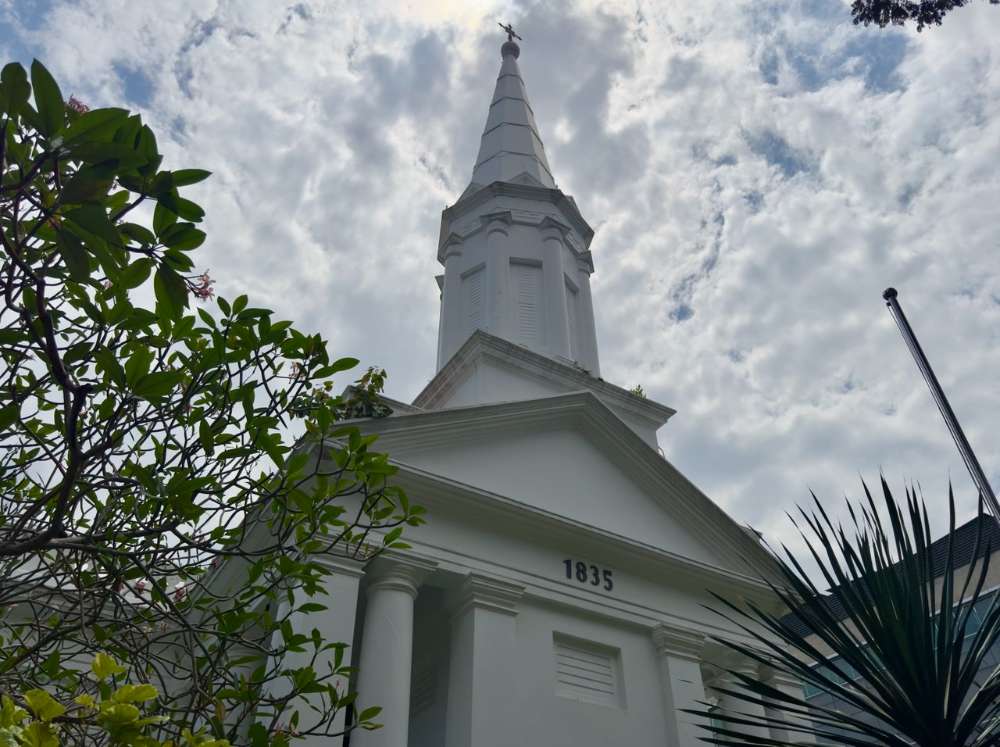 IMAGE: NG KAI
IMAGE: NG KAI
The church initially had a bell turret with a conical dome, which was was replaced in 1847 by a square tower, and again in 1853 by the current belfry (the part of a bell tower in which bells are housed) designed by English architect George Maddock.
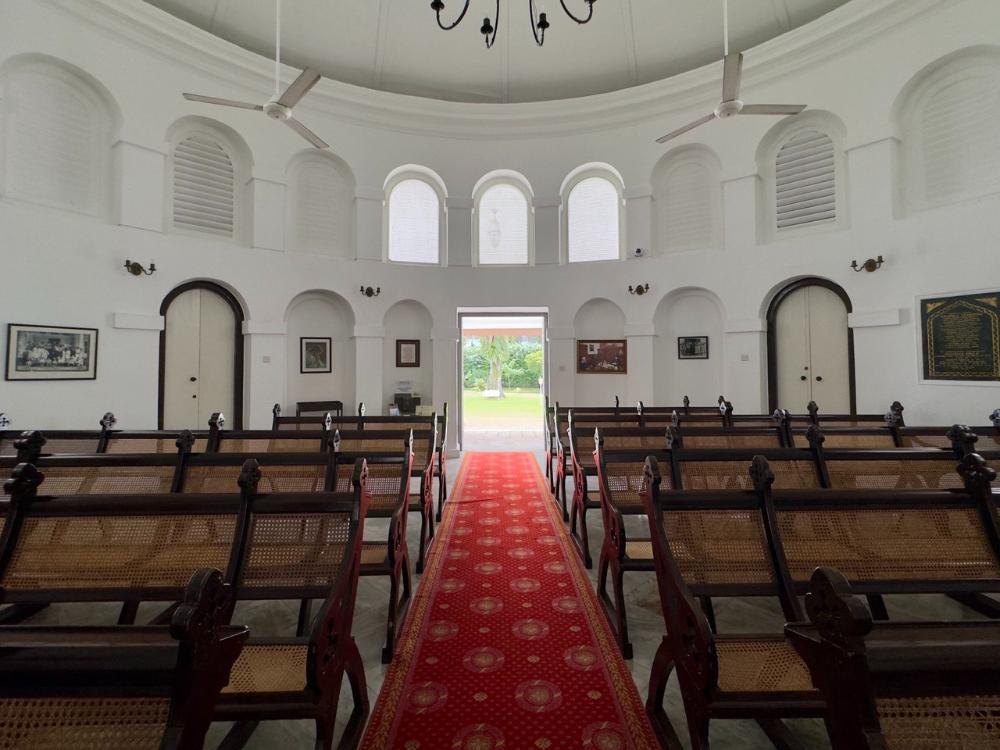 IMAGE: NG KAI
IMAGE: NG KAI
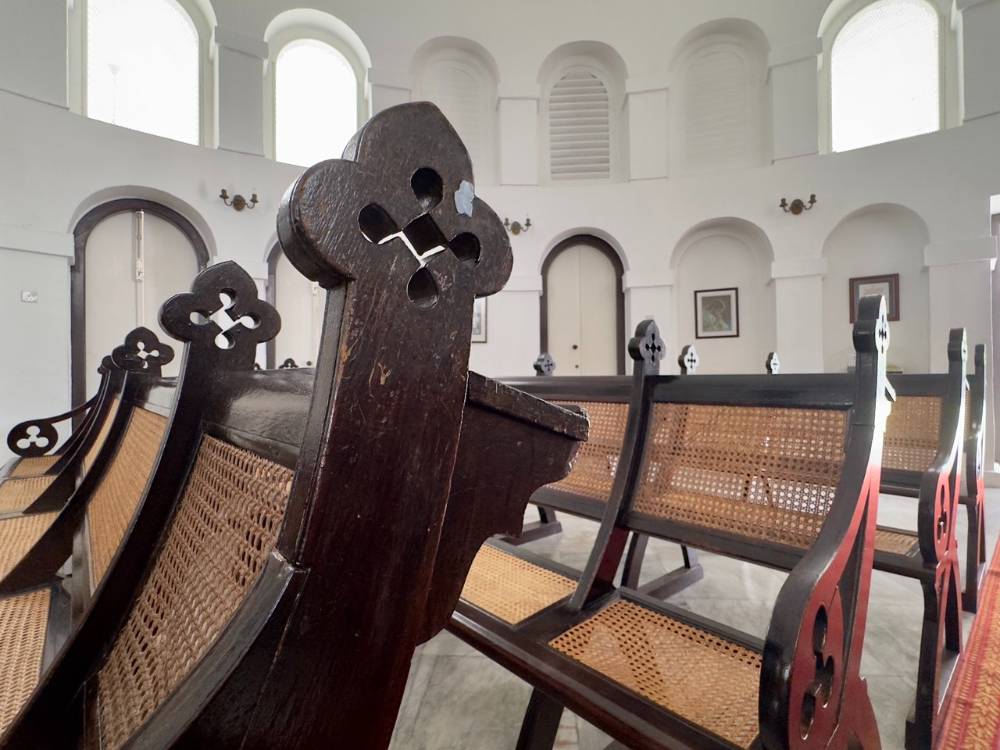 IMAGE: NG KAI
IMAGE: NG KAI
Inside, the church stands out for its rare circular layout, unique among churches in Singapore. Plenty of windows and doors allow for natural ventilation. The pews, dating back to before WWII, have rattan backs for comfort in the tropical heat, and are decorated with carved crosses and motifs symbolising the Holy Trinity.
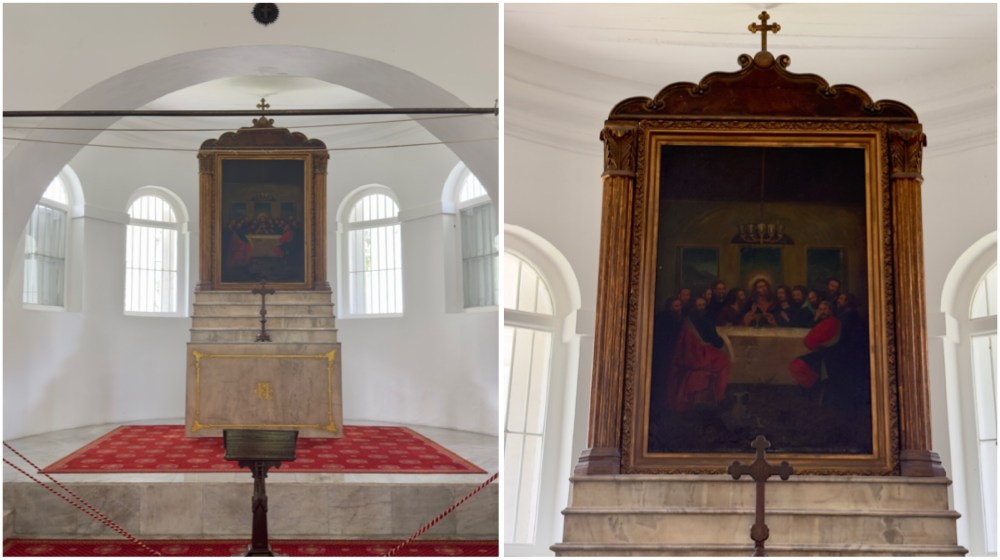 IMAGES: NG KAI
IMAGES: NG KAI
The altar in the sanctuary features a painting of the Last Supper – the last meal Jesus had with his disciples before his crucifixion –, framed in dark fluted wood and topped with a cross.
The front of the marble altar bears Armenian initials meaning “Christ our Saviour”. A trefoil-patterned (three overlapping rings) rail separates the sanctuary from the prayer hall, which is lined with memorial plaques in both Armenian and English.
🕖 Opening hours
Regular visiting hours are from 10m to 6pm daily.
🎟️ Admission
Entry is free when visiting the Armenian Church and its grounds.
However, you need to make an appointment to visit the Armenian Heritage Gallery. Find out more here.
For the latest updates on Wonderwall.sg, be sure to follow us on TikTok, Telegram, Instagram, and Facebook. If you have a story idea for us, email us at [email protected].


